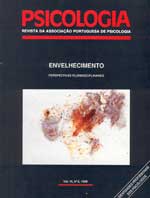Patogenia do envelhecimento cerebral
DOI:
https://doi.org/10.17575/rpsicol.v6i2.800Abstract
The major pathological changes of the aging brain affect the cerebral hemispheres grossly. There is a decrease in the volume of the parenchyma and a concomitant enlargement of the ventricles. A decrease in the number and size of the neurons is observed in selected areas – superior frontal, superior temporal, precentral and striatum. In addition, intracellular accumulation of lipofuscin qualitative changes is the dendritic trees and formation of the so called senile plaques, are also prominent features. Other characteristic abnormalities include Alzheimer’s neurofibrillary tangles, granulovacuolar degeneration and Hirano bodies. The typical microscopical appearance, the localization and pathogenesis are briefly reviewed. Accumulation off an amyloid – like substance in the small cerebral vessels – Congophilic Angiopathy – may be the cause of repeated lobar haematomas. These abnormalities are part of the «normal» aging process of the brain. They are also encountered, although in a much more pronounced fashion, in cases of senile dementia. The cellular changes are accompanied by alteration of the cerebral neurotransmitters and a correlation between these and the clinical picture may sometimes be established. The extrapyramidal signs are probably due to a decrease of striatal dopamine levels. It has been suggested that the memory troubles are caused by decrease activity of acetylcholine while reduction of noradrenaline and serotonine are considered responsible for the sleep changes. The various theories of aging are reviewed, and the importance of genetic factors is stressed.Downloads
Download data is not yet available.
Downloads
How to Cite
G. Pimentel, J. (1988). Patogenia do envelhecimento cerebral. PSICOLOGIA, 6(2), 207–217. https://doi.org/10.17575/rpsicol.v6i2.800
Issue
Section
Thematic issue


